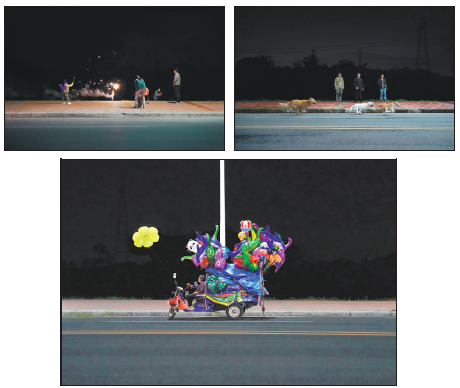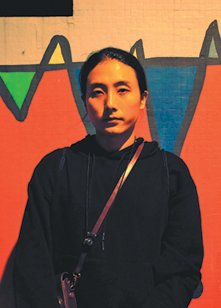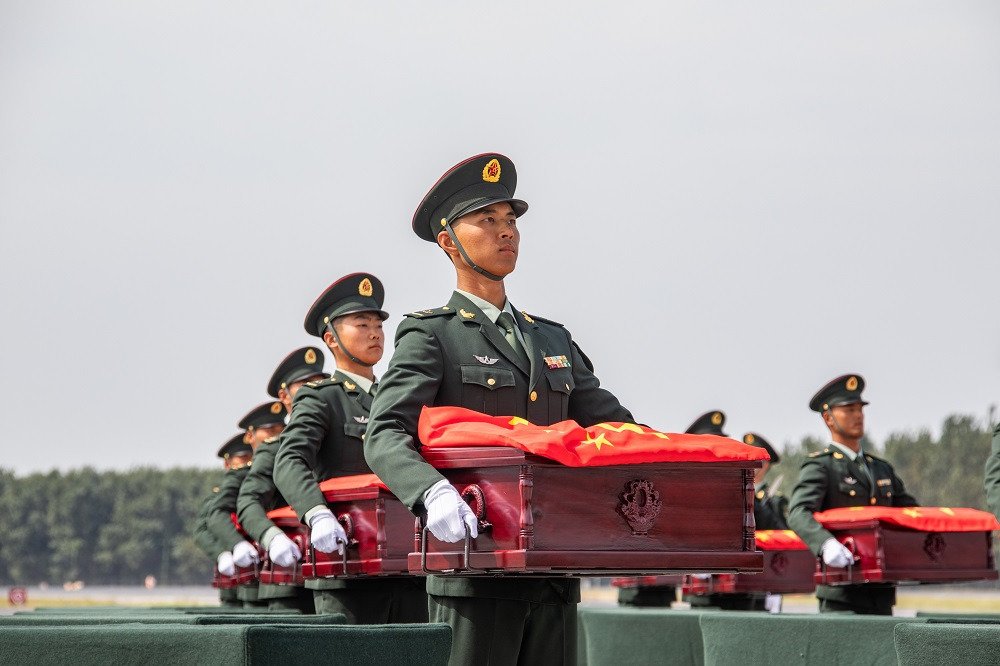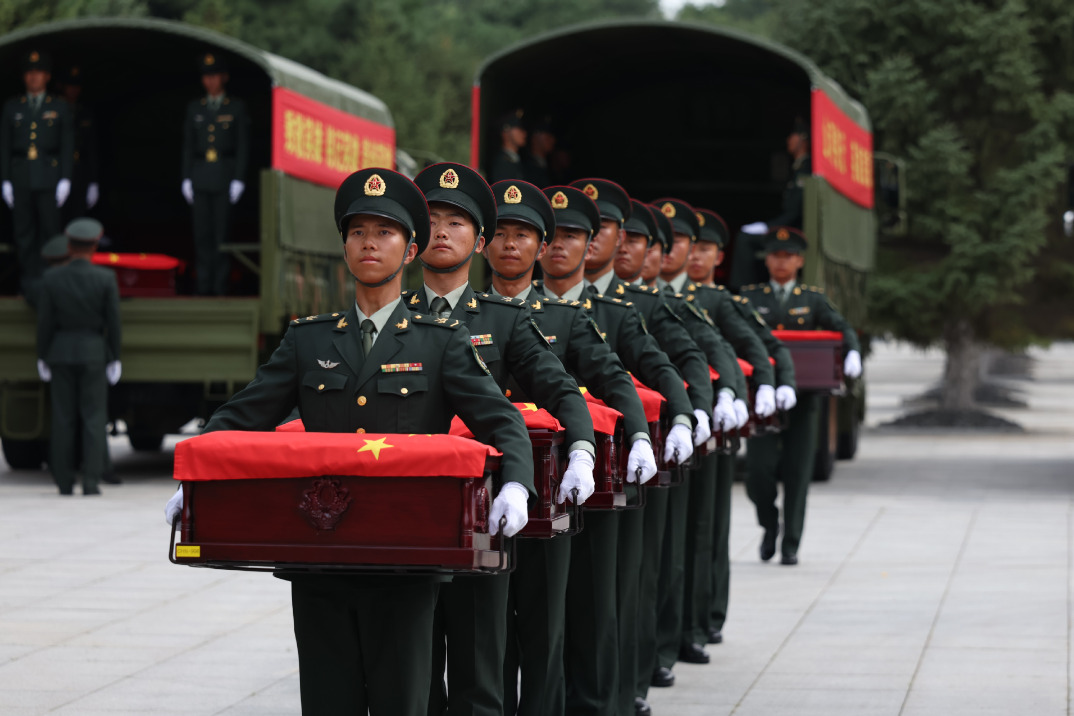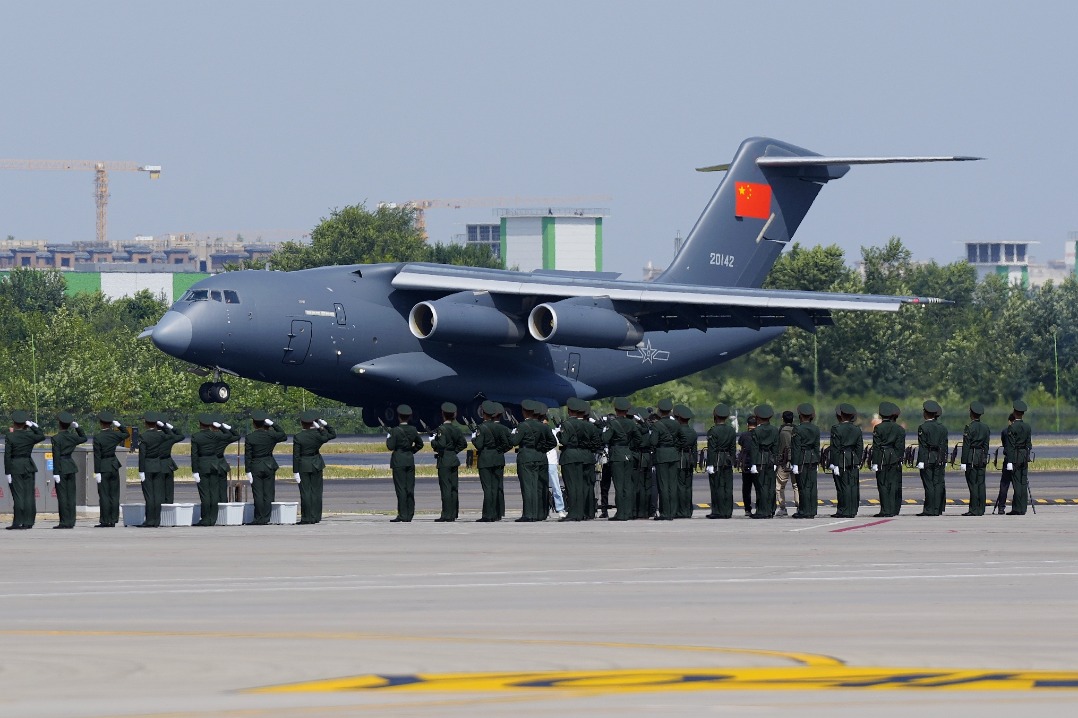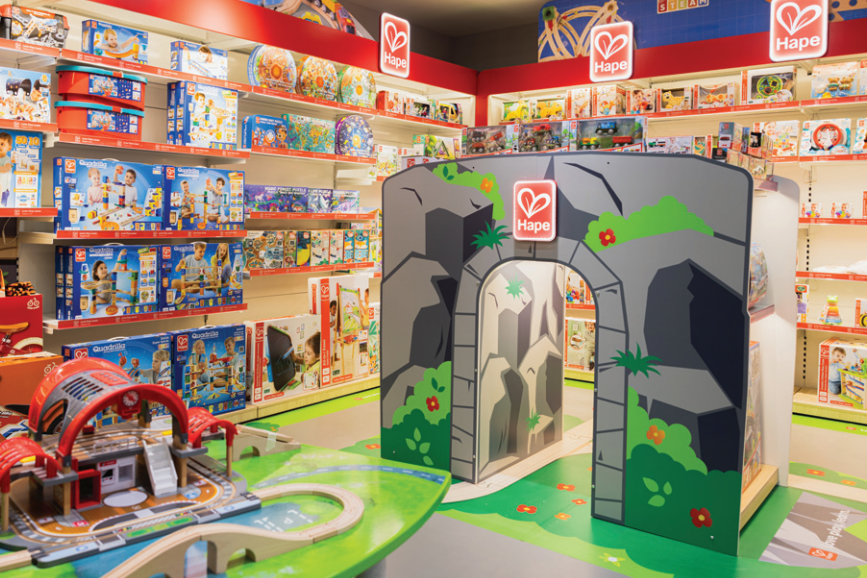An incredible focus on the ordinary
Exhibition offers snapshots of how photographer Yan Jiacheng zooms in on the everyday in specific ways, Yang Feiyue reports.

Foam boxes bound in layers of yellow tape, plastic buckets brimming with utensils and toiletries, battered suitcases and paper cartons strapped to foldable trolleys — through Yan Jiacheng's lens, these humble objects quietly tell the stories of their owners.
"This image is my favorite long-format photograph to date. It's a quiet observation of transience, framed through the belongings of travelers," says Yan, who's from Guangzhou, South China's Guangdong province.
He shot it casually in 2021, when he wandered through a local train station and simply asked waiting passengers if he could photograph their luggage.
To his surprise, most warmly agreed to his request, and some even shared stories about what they'd packed.
"There's an unguarded intimacy in these interactions — a contrast to the usual anonymity of travel hubs," he says.
The photo is one of his Long Story series on display at his solo exhibition, Brief History of the Ordinary, at the Fotografiska in Shanghai, a contemporary museum of photography, art and culture.
With a keen eye, Yan has trained his lens on ordinary people in back-streets, transition zones between urban and rural areas, and subtle moments of collective gathering.
His work deliberately eschews grand technical narratives, opting instead for a sustained gaze at the everyday, aiming to reveal the authentic textures beneath urban facades.
The solo exhibition presents three distinct yet interconnected series that collectively form the artist's holistic meditation on contemporary life.
In addition to the Long Story series, the Nights in the Suburbs series focuses on the nocturnal rhythms of residents in a "bedroom city", where they would only come to sleep after daytimes filled by long commutes. An unremarkable riverside path, transformed by the absence of public spaces, unexpectedly becomes a community hub, where dog-walking, exercise and idle chatter intertwine to stage a slice of urban China's authentic script.
The Living is the Suburbs section documents Yan's observations since relocating to Guangzhou's Zengcheng suburb in 2021. This liminal space, caught between the city and the countryside, bears the rough-hewn, ever-shifting marks of policy changes and temporal flux.
Lai Fei, editor of ArtReview's Chinese edition, says Yan's works have a way of prompting people to contemplate who they are and where they come from in relation to others in society.
Lai recalls how she was struck upon seeing Yan's work on the social media platform, Xiaohongshu.
"There was an unfiltered passion for visual culture, untouched by the demands of the 'image economy'. That kind of authenticity is rare, whether in contemporary art or commercial photography," she says.
In early May, Yan traveled from Guangzhou to Shanghai for just one weekend to inaugurate his exhibition.
"I'll need to return to work on Monday," says Yan, who holds a fulltime job as a user interface designer.
The man, who's in his 30s, turned to photography first as an outlet to blow off steam in 2018, when he had to work more than 10 hours a day.
"Back then, I felt completely drained. Yet, there was always this pent-up energy inside me, an urge to create something truly my own," he recalls.
So, he started to make a point of going out with his camera, shooting the city after nightfall and the overlooked details of his daily surroundings, no matter how late he got off work.
"For someone who isn't quite sure how to begin creating, the simplest forms, like writing or filming, might actually be good starting points," Yan explains.
His perspective tends to come from within the radius of his own life, like his residential community, the places he goes to and from work.
"I see the ordinary as a kind of decentralized language, one that shifts away from grand narratives and instead focuses on the subtle details of daily life. It's about discovering that these small things are also worth paying attention to. That has been my biggest motivation," he says.
Yan didn't just stop at his camera. He also turned the tools of modern life, apps and digital platforms into new ways of seeing. For instance, ride-hailing payments revealed the playful alter egos of drivers behind the wheel. One encounter, in particular, stuck with him.
It began with a taxi ride. As Yan went to scan the payment code, the gruff, stubble-faced driver turned around, only for his phone to flash the man's online alias "Little Star", complete with twinkling emojis.
The contrast between the weathered face and the whimsical nickname struck Yan.
"There was something quietly rebellious about it," he recalls.
That moment sparked his idea of documenting these tiny digital identities people create for themselves.
Soon, Yan and his girlfriend turned every taxi ride into a treasure hunt for the most revealing nicknames. There was the no-nonsense "Pay Before Exiting", the mysterious "Who Am I?" and "Ultimate Beauty".
One driver even disguised his lock-installation advertisement as a name that goes "Smart Fingerprint Locks", along with a contact number.
When Yan posted these on Weibo, they went viral, with strangers sharing their own encounters.
"Taxi drivers might be the only people we share intimate space with yet know nothing about," he reflects.
But their nicknames are their way to say this is who they are when they get to choose, he adds.
This early experience has somehow encouraged him to find more such revealing moments with his camera.
"That simple cycle — shoot, share, be seen — became my lifeline," he says.
His lens has framed commuters stopped at traffic lights, motorcycle taxi drivers idling outside stations, night owls haunting dimly lit streets and bystanders perched on railings watching square dancers.
It laid the foundation for his Long Story series.
"By intentionally stretching the images into a long vertical format, I mimic the 'long scroll' aesthetic common in mobile feeds, while extending the viewers' gaze to give narrative weight to these transient moments," he says.
The train station luggage photo in the series was inspired by his curiosity about if people still took slow green trains, as high-speed rails have sprawled across the country.
He then paid multiple visits to local train stations for several years to document passengers' struggle in their trek, especially during travel rushes like Spring Festival, to meet their families.
"What moves me most, though, is the layered sense of time. Years ago, I was one of those students hauling bags through the station in Guangzhou. Now, standing behind the camera, I wonder if one of these frames unknowingly holds my younger self?" he says.
He has shown his works in the Netherlands, France, the United Kingdom and Indonesia, and has won multiple international photography awards, including the GUP Magazine's Fresh Eyes International Talents 2024 from the Netherlands and the Royal Photographic Society Documentary Photography Awards from the UK in 2023.
Despite professional recognition, Yan says he has never considered himself an artist and still keeps his regular job, which he says has enabled him to focus more on what truly interests him, as it offers a stable income that saves him from worrying about finances.
"I have no formal training in photography. Half the technical settings still baffle me. But what I do know is this: What matters isn't how you shoot but why you shoot," he says.
"My friends don't discuss art over drinks. My coworkers talk about pensions, mortgages, the grind. Living knee-deep in these realities sharpened my eye for what actually weighs on people's minds."

